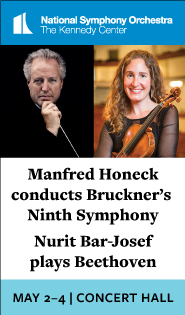National Cathedral presents austere Couperin for Holy Week reflection

Next Sunday is Easter, and that means it is time again for certain beloved musical rituals. For the second year in a row, the coronavirus pandemic leaves many Christians celebrating with a streamed Bach Passion or online Tenebrae service.
Washington National Cathedral offered an especially beautiful option for Holy Week meditation with a streamed performance of François Couperin’s Trois Leçons de Ténèbres on Sunday evening.
In the medieval Triduum, the three days leading up to Easter, three Latin readings from the Book of Lamentations featured in the complex office of Matins each day. Couperin composed music for all nine readings between 1713 and 1717 for the nuns of the Royal Abbey of Longchamp. Founded by the saintly sister of King Louis IX, who lived there without taking vows herself, this convent was the domain mostly of women from wealthy aristocratic families.
Only the first three of Couperin’s nine musical settings survive, on the texts sung in the early morning hours of Holy Thursday. It is music that is both austere, for one or two solo women’s voices accompanied by continuo, and elegant, befitting the nature of the religious foundation. Couperin composed the Leçons in an additive way: one reading for each solo voice and the third for the two voices combined. One can only regret the loss of the six lessons that followed.
Laura Choi Stuart’s limpid soprano suited the first lesson ideally, the forays up to high G and A free and effortless, always retaining a pure clarity. With French-accented Latin pronunciation and refined embellishment, she phrased each verse of the reading with plangent tone. The culmination of each lesson, according to ecclesiastical tradition, is the refrain “Jerusalem, convertere ad Dominum,” a plaint sung with sincere yearning by Choi Stuart.
Soprano Elissa Edwards struggled a little in the second lesson, with the first high passage causing some vocal insecurity. Once her voice had warmed up, the piece settled into place with equally lovely effect. Edwards took breaths more often than her colleague, sometimes in awkward places, but her voice had an immediacy that was more affecting than the cooler sound of Choi Stuart. (Sadly, a notification ding was inadvertently recorded during the second verse of Edwards’ lesson.)
The decorous continuo accompaniment, realized by a combination of theorbo, portative organ, and viola da gamba, provided an ideal sonic envelope for the vocalists. Theorbist William Sims and organist Thomas Sheehan took some turns alone, and the variation of musical texture relieved the simplicity of the score in pleasing ways. The combined sound with the melodic line of Loren Ludwig on the viola da gamba, an instrument with uncanny vocal qualities itself, was immaculate.
Choi Stuart and Edwards matched beautifully in the third lesson, with the former on the first soprano line. Couperin plays the twin parts off one another, one imitating the other. At times both overlapped in poignant suspensions, one voice nestling against the other in a slashing dissonance, and then resolved tenderly with parallel trills.
Couperin, like many composers, created the most striking musical miniatures for the Hebrew letters that begin each verse in the Vulgate. The Hebrew text of the Book of Lamentations is an abecedarius, an alphabetical acrostic poem, in which each of the 22 verses in the first four chapters begins with one of the 22 letters of the Hebrew alphabet in order. When the text was translated into Greek and Latin the acrostic structure had to be abandoned, but the Hebrew letters remained in written-out form (aleph, beth, and so on).
Beginning with versions of these Holy Week lessons in Gregorian chant, these Hebrew letters inspired flights of melodic fancy throughout music history. The rest of the words provide the lesson, the lament over the destruction of Jerusalem by the prophet Jeremiah, likened in Holy Week to the death of Christ on the cross. Yet as shown again in this performance, ineffable emotion comes through the mysterious letters of the ancient language that Christ himself knew.


